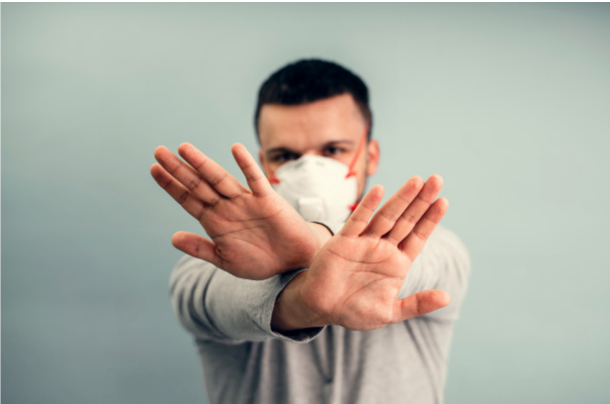Written by : Anet Khechoumian, Licensed Marriage and Family Therapist

Most people may be asking themselves, “was I always this anxious, or is this new?”
Generalized Anxiety Disorder is known to be one of the most commonly diagnosed disorders in America, and now we have a global pandemic to exacerbate these worries even more. For most of us, hindsight can be a helpful way to understand stressors or highlight our best abilities, as past patterns can be a great way to reflect on how we function. Research has been a helpful tool in providing data for what strengths and challenges have been present from past similar circumstances (the SARS outbreak in 2002 or the Ebola outbreak in 2014). We see how a health pandemic poses both a physical and mental threat, as the two are often intertwined with one another.
WHAT IS GOING ON IN MY HEAD?
The disruption of our daily schedule can feel unmanageable when disorganized. Some common emotional responses may include anger, anxiety, boredom, loneliness, high urgency, depressive mood or panic. We may not always be cognizant of what we are feeling when these emotions are combined in nontraditional methods.
Such disruptions may include escalated anxiety, sleep disturbance and hypervigilance. These symptoms also mirror the early warning signs of psychosis, which include isolation, strong (or lack of) emotions, decline in self-care, difficulty concentrating and decline in performance. As we are unfamiliar with what is taking place in our emotional and/or mental state, it is easy to think that we are experiencing a psychotic episode, but it is important to acknowledge and understand that we are simply unfamiliar with what is taking place in our emotional and/or mental state. Historically speaking, after the impact of a significant stressor, we see higher rates of relapse, and setbacks towards recovery begin to arise. As commonly utilized coping skills decrease and fewer distractions are available, the situation provides a vulnerable state especially for those in recovery. We also see higher rates of burn out, as increased time is dedicated towards technology for many uses (work, entertainment, shopping, etc.), and financial stress becomes more prevalent.
IS MY BRAIN STRESSED OUT?
The amygdala is the part of our brain that is responsible for survival, memory and emotions. This is a significant area that is heightened and stimulated during a time of distress, such as a pandemic. This distress is not limited to only the fear of becoming ill, but also the many other factors effected, such as jobs, resources, schools, or events. The amygdala is also responsible for the release of adrenaline and cortisol, which are the stress hormones that significantly contribute to the physiological presentation of anxiety. Some of the most common ways in which anxiety can physically present itself include difficulty breathing, dizziness, excessive sweating, stomach cramps, headaches, muscle tightness, restlessness, lack of focus/clarity, trembling, etc. Interestingly enough, anxiety can also serve as a useful form of comfort, if we are more familiar with functioning in chaos.
HOW DO I STAY RESILIANT?
As human beings who have endured many stages of personal or circumstantial stressors, where we see time and time again how capable and adaptable, we are. Remember to try and incorporate some form of balance between work and personal life (even if that structure is not exactly the same as before). Receiving information is essential, although having a reliable source, that is time bound and consistent, can decrease the overflow of worry and information surplus. We are in an unusual time, where we may experience ongoing alarming thoughts, mistrust, confusion, and restlessness, yet we maintain hopeful and resilient for ourselves as well as others. Numerous reports reflect that people can feel the discomfort is shared amongst a larger group, and though we may all be isolated from one another, we simultaneously feel connected and relatable, on an exceptionally higher scale. So, call your loved ones and talk to them. Even if it’s to express your fears and anxieties. It still helps to verbalize your thoughts so that your loved ones can try and comfort you or even just distract you for a couple of minutes. Most importantly, stay safe and be well !
Anet Khechoumian, MS, MBA, LMFT

{Connect} Web: AnetTherapy.com – IG: @AnetTherapy – Email: AnetTherapy@gmail.com
